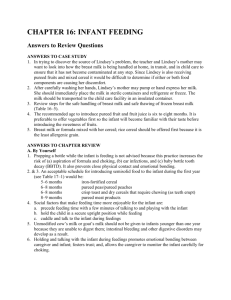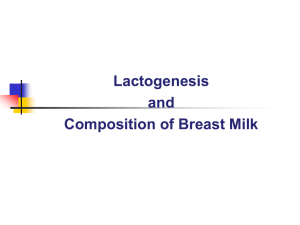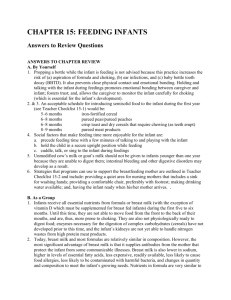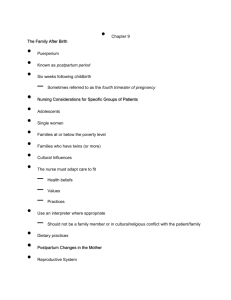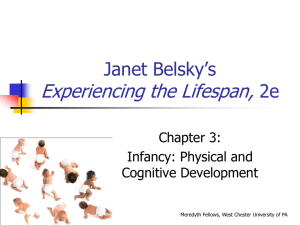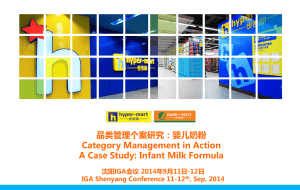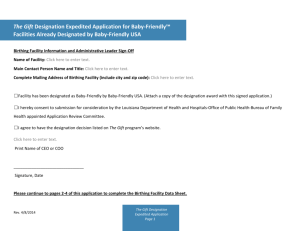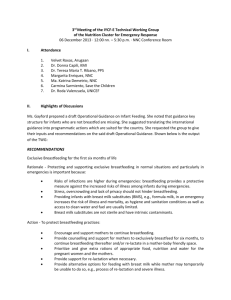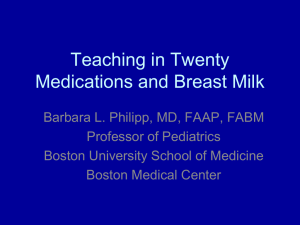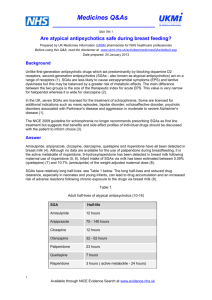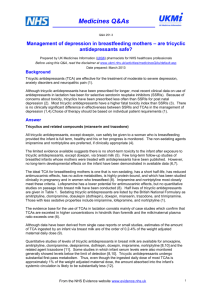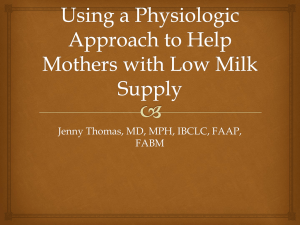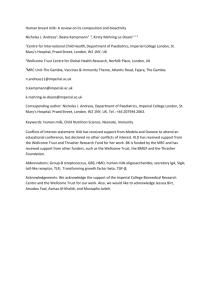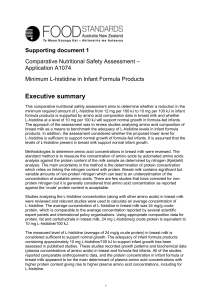Breast feeding – Dr. Khalid
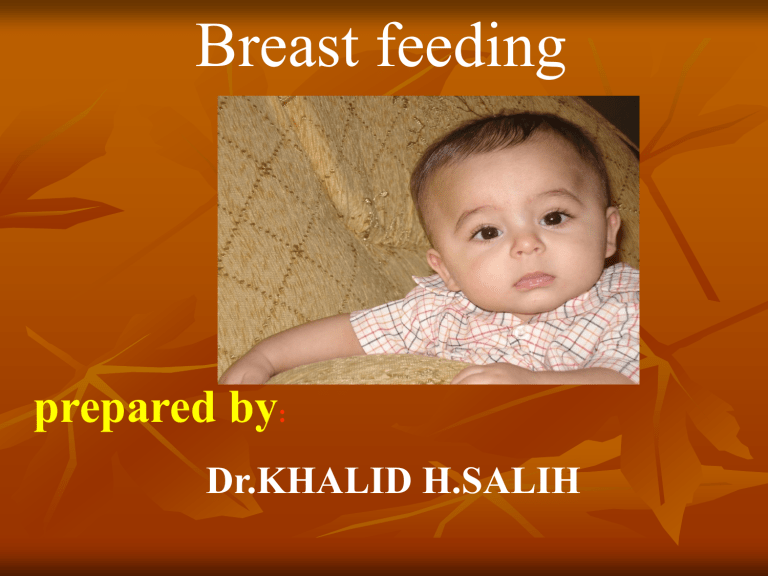
Breast feeding
prepared by
:
Dr.KHALID H.SALIH
If we could give every individual the right amount of nourishment and exercise, not too little and not too much, we would have found the safest way to health.
Hippocrates
Principles of feeding
• Feed according to expected wt
• GIT should be used whenever possible
• Milk should not be diluted
• No sugar should be added to the bottle feed
• Weaning food should be started at 4-6mon
Composition of Breast Milk
Minerals
Vitamins
Fat
Carbohydrates
Protein
Water
Anti-Allergenic Properties
Anti-Parasitic Properties
Anti-Viral Properties
Anti-Bacterial Properties
Hormones
Growth Factors
Enzymes
Alive
Approx.300+ more Factors than ABM
Protein
Summary of differences between milks
Infant formula Human milk correct amount, easy to digest
Animal milks too much, difficult to digest partly corrected
Fat enough essential fatty acids, lipase to digest lacks essential fatty acids, no lipase no lipase
Water
Anti-infective properties enough present extra needed absent may need extra absent
Adapted from: Breastfeeding counselling: A training course. Geneva, World Health
Organization, 1993 (WHO/CDR/93.6).
Slide 2.2
Breast milk composition differences (dynamic)
Gestational age at birth
(preterm and full term)
Stage of lactation
(colostrums and mature milk)
During a feed
(foremilk and hind milk)
Day & night milk
Summer & winter
Slide 2.4
Slide 2b
Property
Antibody-rich
Many white cells
Purgative
Growth factors
Vitamin-A rich
Colostrum
Importance
protects against infection and allergy protects against infection
clears meconium; helps prevent jaundice helps intestine mature; prevents allergy, intolerance
reduces severity of some infection (such as measles and diarrhoea); prevents vitamin Arelated eye diseases
Slide 2.5
Slide 2c
Technique of Breast Feeding
Feedings should be initiated as soon after birth as possible
Mothers who wish to initiate breast-feeding in the delivery room should be supported in doing so.
the infant's desire for food will vary at different times of the day(The time required for an infant's stomach to empty may vary from 1–4 hr or more during a single day)
By the end of the 1st wk of life, most healthy infants will be taking 60–90 mL/feeding and want 6–9 feedings/24hr
ADVANTAGES OF BREAST-FEEDING
1.Human milk is uniquely adapted to the infant's needs and is the most appropriate milk for the human infant
2.It is always available at the proper temperature and requires no preparation time
3.It is fresh and free of contaminating bacteria
4.Breast-feeding is associated with fewer feeding difficulties incident to allergy and/or intolerance to bovine milk.
5.Human milk contains bacterial and viral antibodies, including relatively high concentrations of secretory immunoglobulin A
6.It also contains substances that inhibit the growth of many common viruses as well as bacteria
Advantage ------
7.It also contains antibodies that are thought to provide local gastrointestinal immunity against organisms entering the body via this route.
8.Macrophages in human milk may synthesize complement, lysozyme, and lactoferrin
9.breast milk contains lactoferrin, an iron-binding whey protein that is normally approximately ⅓ saturated with iron and has an inhibitory effect on the growth of Escherichia coli
10.lower pH of the stool of breast-fed infants is thought to contribute to the favorable intestinal flora of infants
11.Human milk also contains bile salt-stimulated lipase, which kills Giardia lamblia and Entamoeba histolytica
12.passive transfer of T-cell immunity.
13.Breast milk will supply all the necessary nutrients except fluoride, The vitamin K and vitamin D.
14.The psychologic advantages of breast-feeding for both mother and infant are well recognized
Contraindications of Breast Feeding :
1.Contraindications related to mother like septicemia , nephritis , eclampsia , profuse hemorrhage , active tuberculosis , typhoid fever , breast cancer and malaria
2.Contraindications related to infant like galactosemia .
Determination of adequacy of milk supply :
The following signs indicate adequate breast milk feeding :-
1)
Infant sleep 2-4 hr after nursing .
2)
3)
Infant gaining weight .
Good urine output .
Supplement to Breast Fed Infant:
• Give Vit. K1 to all babies(1mg Vit K)
• Give Vit. D to all breast fed babies(400 IU/day)
• Give Iron to all breast fed babies by 6 mo
Disadvantages of Breast Feeding
:
•
Unknown intake-volume of milk.
• Transmission of infection-CMV, hepatitis, HIV,TB
• Breast milk Jaundice-mild self limiting
• Transmission of drugs-antithyroid, anti cancer
• Nutritional inadequacies-prolong BF without introduction of solids lead to poor weight gain, rickets
• Vit K deficiency—hemorrhagic disease of newborn
• Less flexible, emotional upset if unsuccessful
?Quiz
Calculate the normal energy & fluid requirement for 2 year old child (12kg) ?

